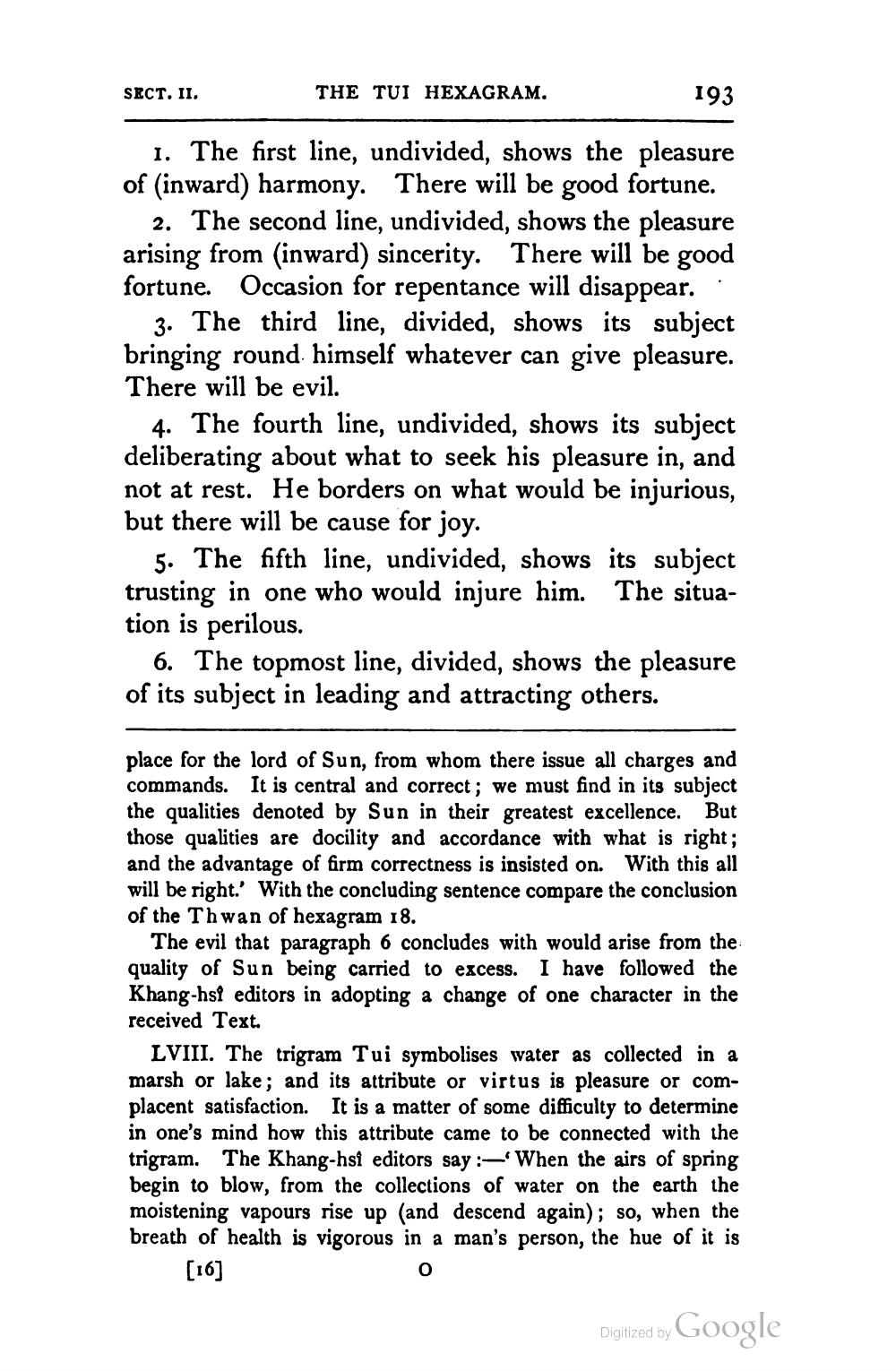________________
SECT. II.
THE TUI HEXAGRAM.
193
1. The first line, undivided, shows the pleasure of (inward) harmony. There will be good fortune.
2. The second line, undivided, shows the pleasure arising from (inward) sincerity. There will be good fortune. Occasion for repentance will disappear.
3. The third line, divided, shows its subject bringing round himself whatever can give pleasure. There will be evil.
4. The fourth line, undivided, shows its subject deliberating about what to seek his pleasure in, and not at rest. He borders on what would be injurious, but there will be cause for joy.
5. The fifth line, undivided, shows its subject trusting in one who would injure him. The situation is perilous.
6. The topmost line, divided, shows the pleasure of its subject in leading and attracting others.
place for the lord of Sun, from whom there issue all charges and commands. It is central and correct; we must find in its subject the qualities denoted by Sun in their greatest excellence. But those qualities are docility and accordance with what is right; and the advantage of firm correctness is insisted on. With this all will be right. With the concluding sentence compare the conclusion of the Thwan of hexagram 18.
The evil that paragraph 6 concludes with would arise from the quality of Sun being carried to excess. I have followed the Khang-hs? editors in adopting a change of one character in the received Text.
LVIII. The trigram Tui symbolises water as collected in a marsh or lake; and its attribute or virtus is pleasure or complacent satisfaction. It is a matter of some difficulty to determine in one's mind how this attribute came to be connected with the trigram. The Khang-hst editors say:-'When the airs of spring begin to blow, from the collections of water on the earth the moistening vapours rise up (and descend again); so, when the breath of health is vigorous in a man's person, the hue of it is
[16]
O
Digitized by
Google




